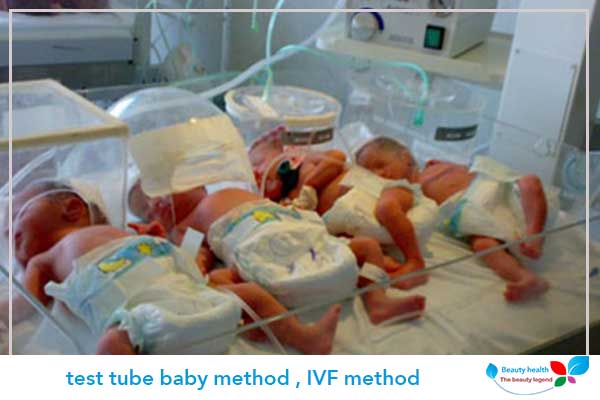test tube baby method
test tube baby method
test tube baby method , IVF method | Who are test tube babies? Why is IVF performed? What is the success rate of the operation? What are its harms, and what are its complications? And when is test-tube baby confirmed? What are the signs of successful operation?
Who are the test tube babies?
- IVF is one of the most common and effective assisted reproductive technologies in helping women get pregnant so far.
- Many people who have experienced pregnancy failure by other methods of assistance also resort to this technique.
How is in vitro fertilization and what is the success rate of the process?
IVF is based on extracting eggs from a woman’s ovaries and fertilizing them with sperm. The embryo can then be frozen for storage or transferred to the woman’s uterus. Depending on your condition, IVF can use:
- Your eggs and your partner’s sperm.
- Your eggs and donor sperm.
- Your partner’s donor eggs and sperm.
- Egg donor and animal donor.
- Donated embryos.
- It is also possible to “implant embryos in a surrogate or a gestational carrier (a woman who carries your child for you).
- The success rate of IVF varies with age.
- The live birth rate for women under the age of 35 who have undergone IVF is 41-43 percent.
- This rate also drops to 13-18 percent in women over the age of 40.
Why is IVF performed?
IVF helps infertile people who want to have a baby. IVF is also expensive, so couples often try other fertility treatments or intrauterine insemination. Infertility problems for which IVF may be necessary include:
- Decreased fertility in women over the age of 40.
- A blocked or damaged fallopian tube.
- decreased ovarian function;
- Endometrial problems.
- Uterine fibroids.
- Male infertility .
- Unexplained infertility.
What are the disadvantages of the artificial fertilization process (test tube baby method)?
IVF procedure involves many risks and side effects. The side effects also include the following:
A small amount of fluid comes out after the operation, and these fluids may be transparent or accompanied by blood.
- Mild swelling.
- mild cramps;
- constipation;
- Pain in the breast when touched.
Some symptoms may also appear that require a visit to the doctor, including these symptoms:
- Profuse vaginal bleeding.
- pelvic pain
- Appearance of blood in the urine.
- Fever, where the body temperature exceeds 38 degrees Celsius.
Also, some of the prescribed medicines have side effects and harms, including the following:
- The appearance of bruising and mild pain at the injection site.
- nausea;
- vomiting;
- Temporary allergic reactions, which are redness of the skin or itching at the injection site.
- Increased vaginal secretions.
- mood disturbances;
- Tired.
Ovarian hyperstimulation syndrome and symptoms of this condition include (test tube baby method):
- nausea;
- bloating;
- Feeling of discomfort in the ovary.
- Accumulation of fluid in the abdomen and lungs.
- Ovarian enlargement.
- Drought.
- Breathing difficulty.
- Severe pain in the abdomen.
- Blood clots or kidney failure are considered rare.
Complications of IVF (test tube baby method):
Undergoing IVF may increase the risk of suffering from several complications, including the following:
- Pregnancy with more than one fetus.
- It also causes premature birth.
- The birth of a child with a weight greater than the normal weight.
- It may also lead to miscarriage.
- Ovarian hyperstimulation syndrome.
- Complications may also occur as a result of egg extraction procedures: such as bleeding, injury or infection of the intestine, bladder, or blood vessels.
- A woman may also experience complications associated with undergoing general anaesthesia.
- An ectopic pregnancy may also occur .
- Congenital defects in the fetus.
- A woman may also develop ovarian cancer.
- Psychological stress.
When to prove pregnancy when IVF (test tube baby method)?
The embryos resulting from the fertilization of eggs in the laboratory are transferred in the form of an embryo sac inside the uterus . After the transfer process, it takes nine days to confirm the existence of pregnancy, during these days the following happens to the fetus:
- The embryonic vesicle begins to emerge from its shell on the first day.
- The fetal vesicle continues to emerge from its shell and begins to attach to the uterus.
- On the third day, the fetal vesicle is attached deeper into the uterine lining, and the implantation process begins.
- The transplantation process continues on the fourth day.
- On the fifth day, the implantation process is complete, and the cells that will eventually become the placenta and fetus begin to develop.
- Human chorionic gonadotropin, the hormone that signals a developing pregnancy, begins to enter the bloodstream at the beginning of the sixth day.
- On the seventh and eighth day, the growth of the fetus continues, and the secretion of the hormone continues as well.
- On the ninth day, the levels of the hormone in the mother’s blood increase enough to detect pregnancy using a blood test.
- The incidence of miscarriage after IVF can range between 10-25 percent.






